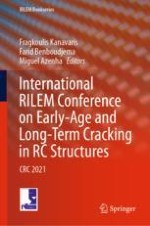2021 | OriginalPaper | Buchkapitel
Plain Geopolymer Concrete Cross-Section Surface Analysis After Creep and Shrinkage Tests in Compression and Tension
verfasst von : Rihards Gailitis, Andina Sprince, Leonids Pakrastins, Kinga Korniejenko, Tomass Kozlovskis
Erschienen in: International RILEM Conference on Early-Age and Long-Term Cracking in RC Structures
Aktivieren Sie unsere intelligente Suche, um passende Fachinhalte oder Patente zu finden.
Wählen Sie Textabschnitte aus um mit Künstlicher Intelligenz passenden Patente zu finden. powered by
Markieren Sie Textabschnitte, um KI-gestützt weitere passende Inhalte zu finden. powered by
